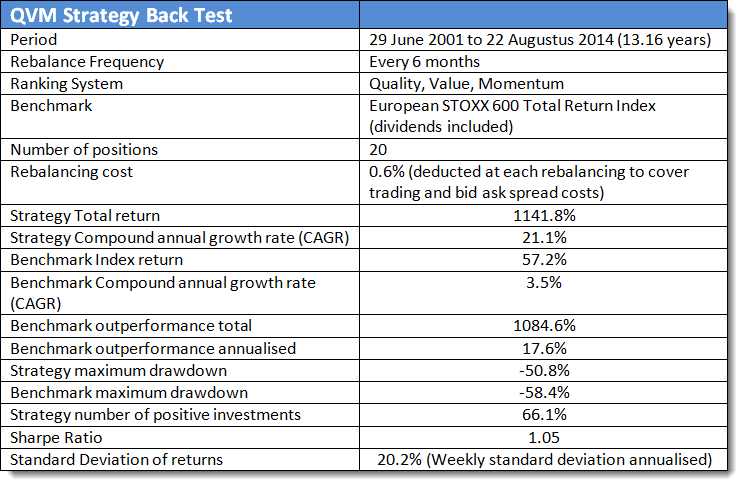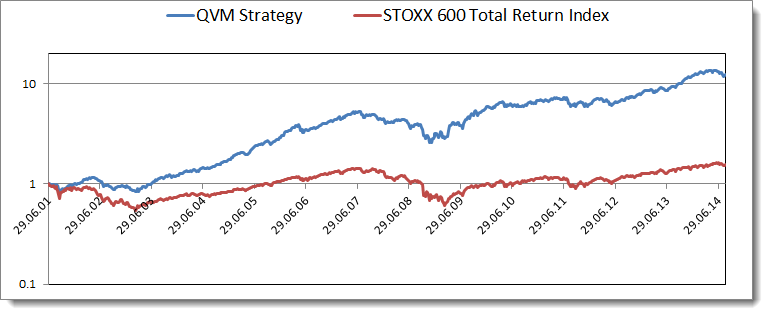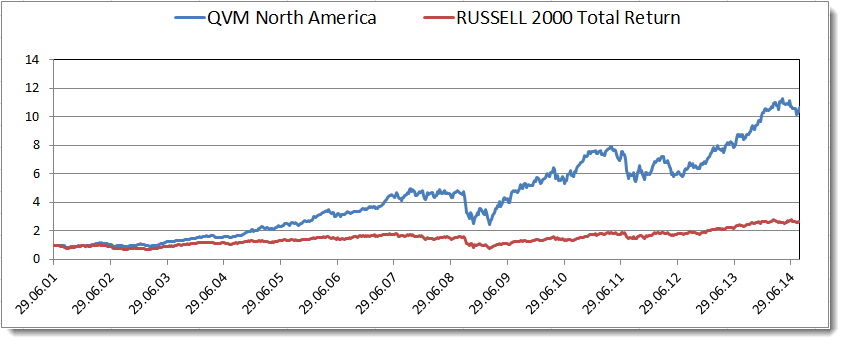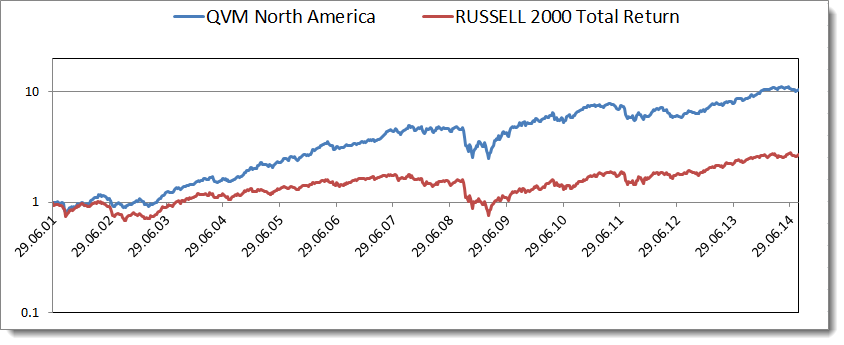Discover how the Quality, Value, and Momentum (QVM) investment strategy can supercharge your investment returns. This post guides you step-by-step through implementing QVM, combining the best elements of these three key factors.
You’ll learn how to identify undervalued stocks with strong financials and upward momentum, leading to potential higher returns. Back-tested results show how this strategy outperformed major indexes in Europe and North America. If you’re looking to optimize your portfolio, this is a must-read.
Estimated Reading Time: 8 minutes
This Quality Value Momentum (QVM) investment strategy is made up of the best ideas from our research paper Quantitative Value Investing in Europe: What works for achieving alpha as well as all the research we have done since then.
This 13-year back test shows you how the strategy performed in Europe and North America.
You can also see how to implement the QVM investment strategy in your portfolio in easy to follow steps.
What is Quality Value and Momentum?
The strategy is a combination of quality, value and momentum ratios and indicators to give you the highest possible returns.
This is how the quality, value and momentum companies were selected.
In Europe:

In North America:

How Are the Companies Selected?
Quality
The first thing we do is remove all the low quality companies from the list of possible investment ideas.
First remove companies that generate a low level of free cash flow to total debt (a company must generate cash profits in order to repay its debt). Use the FCF to debt ratio in one of the sliders in the screener and select 0% to 70%
Secondly remove companies that have a low return on assets. Research has shown that companies with a low return on assets don't generate high returns. Use the ratio Gross Margin (Marx) and select 0% to 70% with the slider.
Thirdly remove companies where there's a big difference between the profits and the free cash flow the company generates. Again because research has shown that companies with free cash flow nearly equal to profits (low level of accruals) give you much higher returns. Use the ratio Accrual Ratio CF and select 30% to 100% with the slider.
Valuation
After removing all the low quality companies we select the top 20% of companies with the highest earnings yield (EBIT to enterprise value). Use the ratio Earnings Yield and select 0% to 20% with the slider.
Most of the time the simplest ideas lead to the best results, this is definitely true of this valuation ratio as numerous research studies have shown that this is the most effective valuation ratio you can use to look for high return investments.
Click here to start finding Quality, Value, Momentum investment ideas NOW!
This is what your screen should look like:

Click to enlarge
Add Momentum to the Screen
Momentum
One fact that that we come across all the time in our testing it is that if you want high returns you have to consider share price momentum.
To select investment ideas for the QVM strategy combine 3 month (Price Index 3m) and 6 months (Price Index 6m) share price momentum so that only companies with an upward moving share price are selected.
To do this you must export the above results to Microsoft Excel.
For both 3 and 6 month Price Index select the 50% of companies with the best momentum.
Buy the 20 Best Ideas
After you have completed all the above-mentioned criteria, choose the 20 most undervalued companies based on a Value Composite One rank as defined by James O'Shaughnessy in the fourth edition of his excellent book What Works on Wall Street.
To do this sort the remaining companies by the Value Composite One column in Excel. Remember the lower the number the better the company is ranked.
In Summary - A Simple Idea that Works Spectacularly Well
The Quality, Value and Momentum investment strategy boils down to the following simple principles:
- Remove bad quality companies
- Look for undervalued companies
- That have good share price momentum
- Choose only the most undervalued companies
Click here to start finding Quality, Value, Momentum investment ideas NOW!
How Did the Strategy Perform?
This is how the QVM investment strategy performed.
In Europe:

Click image to enlarge
The table below shows the yearly returns of the QVM strategy compared to the European STOXX Total Return index (which includes dividends):

Click image to enlarge
(*) Inception date 29-06-2001
(**) End date 22-08-2014
Growth of Your Investment Using the Strategy - €1 grown to €12 index only €1.57
This chart shows the growth of investing €1 in the QVM strategy compared to if you invested in the European STOXX 600 Index (dividends included).
As you can see in the chart below your €1 investment in the QVM Strategy would have grown to just less than €12. Compare this to if you invested €1 in the index you would have only had €1.57 after 13 years.
Your €10 000 grew to €114 180
This means if you invested €10 000 in this strategy after just more than 13 years you would have had €114 180 in your bank account.
If you invested the same €1 000 in the index you would have only had €1 572 after 13 years.
This is what your returns would have looked like:

Click image to enlarge
Returns Logarithmic Scale
This chart below also shows your return of investing €1 in the QVM Strategy and the index but it shows a logarithmic scale to show that the index was even more volatile than the QVM Strategy.

Click image to enlarge
In North America:
The table below shows the yearly returns of the QVM North America strategy compared to the Russell 2000 (EOD) Total Return index (which includes dividends):

Click image to enlarge
(*) Inception date 29-06-2001
(**) End date 22-08-2014
Growth of Your Investment Using the Strategy - $1 grew to $10.62 index only $2.69
This chart shows the growth of investing $1 in the QVM North America strategy compared to if you invested in the Russell 2000 (EOD) Total Return index (dividends included).
As you can see your $1 investment in the QVM North America Strategy would have grown to $10.62. Compare this to if you invested $1 in the index you would have only had $2.69 after 13 years.
Your $10 000 Grew to $106 238
This means if you invested $10 000 in this investment strategy after just more than 13 years you would have had $106 238 in your account.
If you invested the same $10 000 in the index you would have only had $26 899 after 13 years. This is what your returns would have looked like:

Click image to enlarge
Returns Logarithmic Scale
This chart below also shows your return of investing €1 in the QVM Strategy and the index but it shows a logarithmic scale to show that the index was even more volatile than the QVM Strategy.

Click image to enlarge
Click here to start finding Quality, Value, Momentum investment ideas NOW!
Frequently Asked Questions
1. What is the QVM strategy?
The QVM strategy combines Quality, Value, and Momentum factors to find stocks with strong fundamentals, undervaluation, and a positive price trend.
2. Why should I care about momentum in investing?
Momentum helps you find stocks with rising prices. By investing in these, you can ride the upward trend for higher profits.
3. How do I find quality stocks?
Start by excluding companies with poor free cash flow, low return on assets, and significant discrepancies between profits and cash flow. This filters out companies likely to underperform.
4. Why is earnings yield important?
Earnings yield (EBIT to EV) is a key valuation metric. High earnings yield means a stock is undervalued, offering better potential for returns compared to others.
5. How do I combine Quality, Value, and Momentum in practice?
Use a screener to filter stocks based on quality and valuation criteria, then apply momentum indicators to select those with strong price trends.
6. How does the QVM strategy perform compared to the market?
Over 13 years, the QVM strategy significantly outperformed both European and North American market indices, growing your investment by over 10 times.
7. Is this strategy easy to implement?
Yes, you can easily apply this strategy using a stock screener and some Excel skills to filter and sort potential investments.
8. How often should I review my QVM portfolio?
In this back test we reviewed the portfolios every 6-months. This ensures that the stocks in your portfolio still meet the Quality, Value, and Momentum criteria.
9. What should I do if a stock in my portfolio loses momentum?
Consider selling it, as losing momentum might indicate that the stock’s upward trend is reversing.
10. Can I apply this strategy to my current portfolio?
Absolutely! You can start by analysing your current holdings using the QVM criteria to decide if you should keep, buy more, or sell.
Great Returns Easy to Implement
As you have seen the strategy’s returns are great and you can be easily implement it using the screener.
P.S. To get these returns for your portfolio (for less than an inexpensive lunch for two) sign up now by clicking on the following link: Join Quant Investing today
P.P.S It is so easy to put things off, why not sign up right now while it is still fresh in your mind?
Click here to start finding Quality, Value, Momentum investment ideas NOW!


